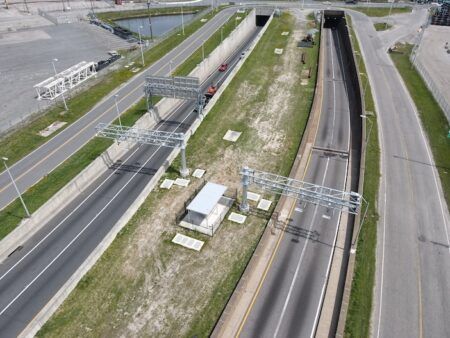VeriToll, the first TAAS (Tolling as a Service) company, has launched its newest product, CrowdToll, which the first crowdsourced image review technology that aims to cut toll validation costs by more than half, while achieving higher levels of accuracy and a quicker turnaround.
VeriToll focuses on innovating products that are created to lead the transportation industry. The company was founded in 2012 by three leading innovative entrepreneurs with expertise in cloud and mobile computing, Chris Higgins (CEO), Joseph Silva (CTO), and Lyndell Higgins (CMO. After introducing CrowdToll at the 2016 IBTTA (International Bridge, Tunnel and Turnpike Association) conference in Boston in July, the industry has expressed considerable interest in the innovative technologies VeriToll is offering. The company is currently in the middle of its second pilot program, with two more to follow, in order to fully validate its technology prior to an initial industry offering.
The majority of tolling systems worldwide use license plate recognition cameras to capture images for ‘toll-by-plate’ fee collection for drivers that do not have a transponder or tag. Optical character recognition (OCR) software automates most of the processes, but large numbers of plate reads need to be manually validated. CrowdToll provides near unlimited scalability where manual image review techniques are historically limited by a fixed staffing model, creating a slow-to-process, slow-to-scale, and slow-to-grow ecosystem. Using the ‘sharing economy’ in a similar way to Uber, Airbnb, and Etsy, CrowdToll’s crowdsourced reviewer pool exists 24/7 and given the innovation of its reviewer technology, anyone in the world can become a toll validator. To ensure driver anonymity, algorithms split each plate image between several reviewers, who receive ‘rewards’ for their work.
With the ability to scale resources, the model inherently provides a performance boost, allowing several additional review passes at a lower cost point, offering unlimited scalability, better performance, and lower cost. Enforcement mechanisms that are typically image-based will always be required for any pay-to-drive mechanism, such as GPS Tolling or Mileage-Based User Fees instead of gasoline-based taxation. Conventional tolling system usually need a ‘backup’ collection method, rendering enforcement using image-based mechanisms a requirement. As CrowdToll continues to perfect its verification methods, the cost and performance characteristics will only improve, as the company plans to add additional layers of processing in order to decrease the number of reviews needed, thereby decreasing the cost per review.
“CrowdToll attacks the pitfalls associated with manual image review in scalability, performance, and cost,” commented VeriToll cofounder, Chris Higgins. “When we finalize our model later this year, we’ll have processed millions of images and be on solid footing to begin transitioning assets onto the platform in a methodical and efficient manner. We can’t wait to see what 2017 has to offer!”
Cofounder Joseph Silva, added, “Within our first pilot we validated the ability to process tens of thousands of images in under one hour by utilizing hundreds of reviewers; and that was just one of our review channels.”




